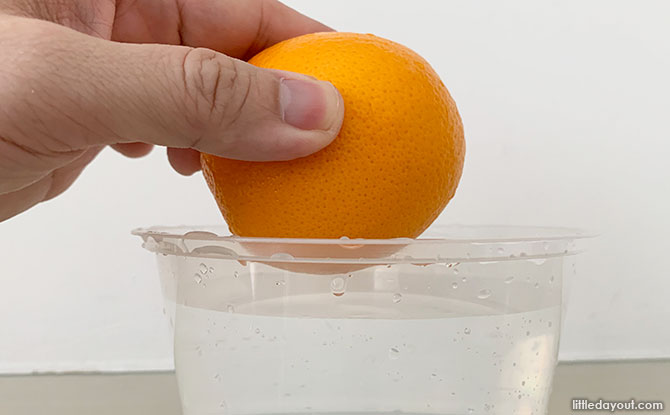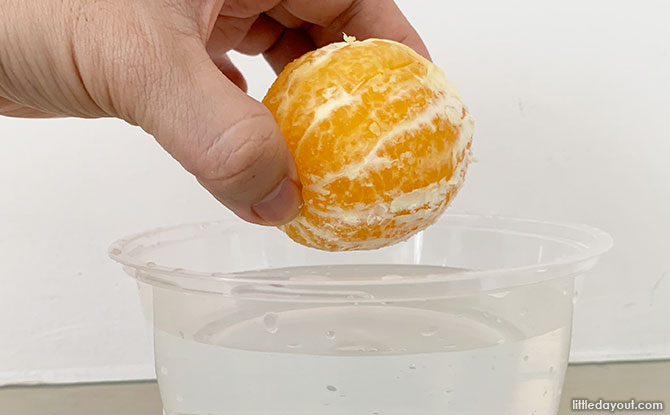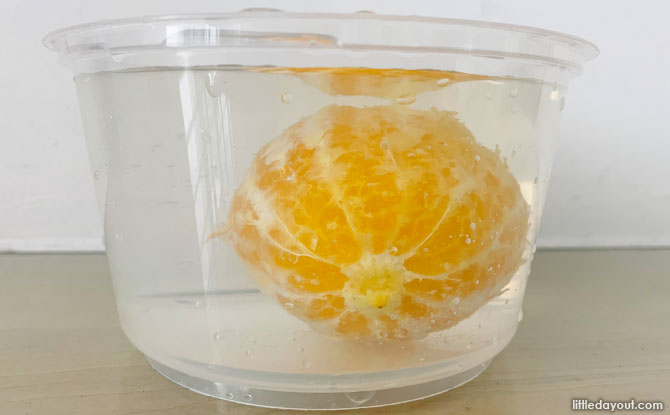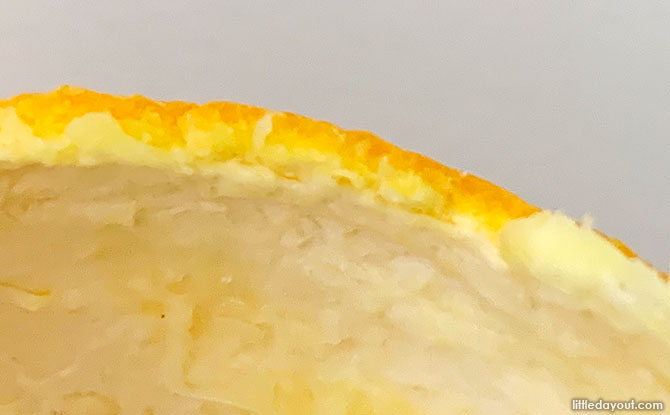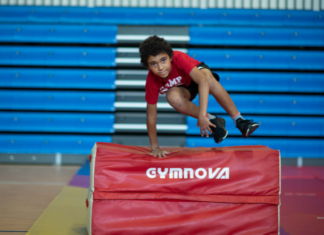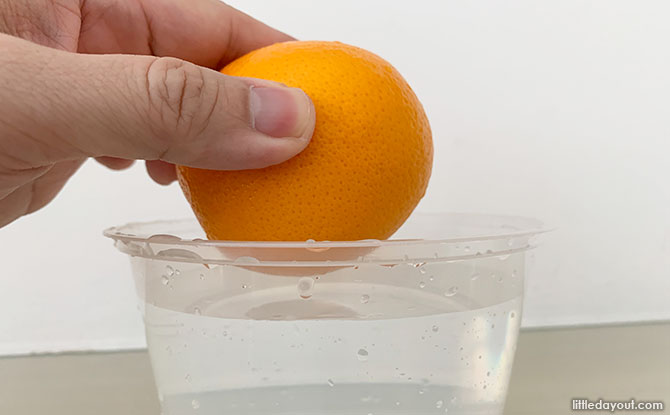
Here’s an easy science experiment you can do with your kids to investigate if oranges float or sink.
All you need for this experiment is an orange and a container that is large enough to fit in the orange.
Orange Sink Or Float Science Experiment
Start by filling up the container with water and then drop the orange with its skin intact into the container.
CARNIVAL OF CHRISTMAS CHEER: Celebrate and Win at Plantation Plaza and Northshore Plaza!
SNOW MUCH TO CELEBRATE: Christmas Fun at The Centrepoint
Does the orange float or sink?
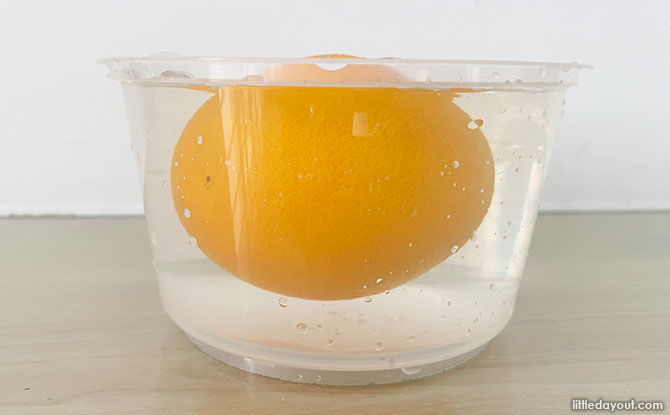
It floats!
Next, take out the orange out from the container and peel off its rind. Set the rind aside.
Now, is the orange heavier or lighter than before without the rind? Lighter, right?
So, what do you expect would happen if you dropped the orange back into the container of water. Since it is lighter, would it carry on floating or would it sink?
However, if you drop the peeled orange back into the container of water, what happens?
It sinks straight to the bottom of the container!
What’s Happening? Here’s the Science
So why does the heavier orange with the skin float and the lighter orange without the skin sink?
The secret is in the rind. Examine it closely and you will notice that it is porous and full of tiny air pockets. It is these tiny air pockets which increase the buoyancy of the orange and enable it to float.
Once the skin is removed, even though the orange is lighter than before, it is denser than the water and therefore sinks to the bottom of the container.
This is a simple and easy science experiment to do with kids to introduce them to the difference between buoyancy and density or weight.


